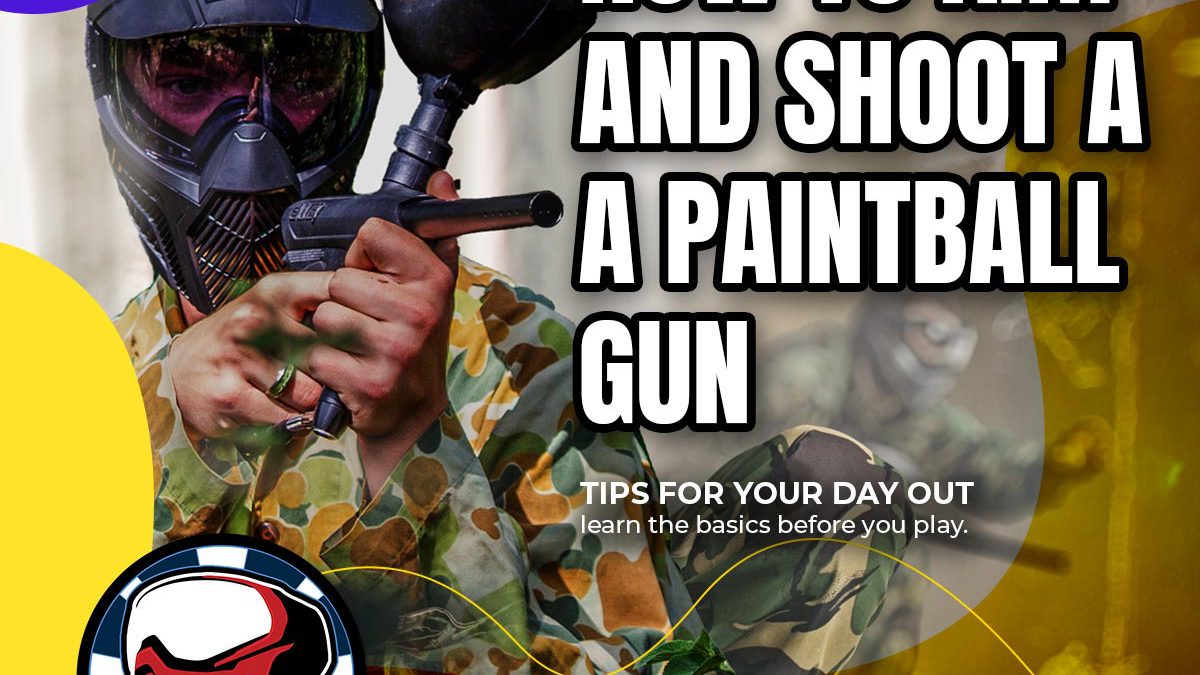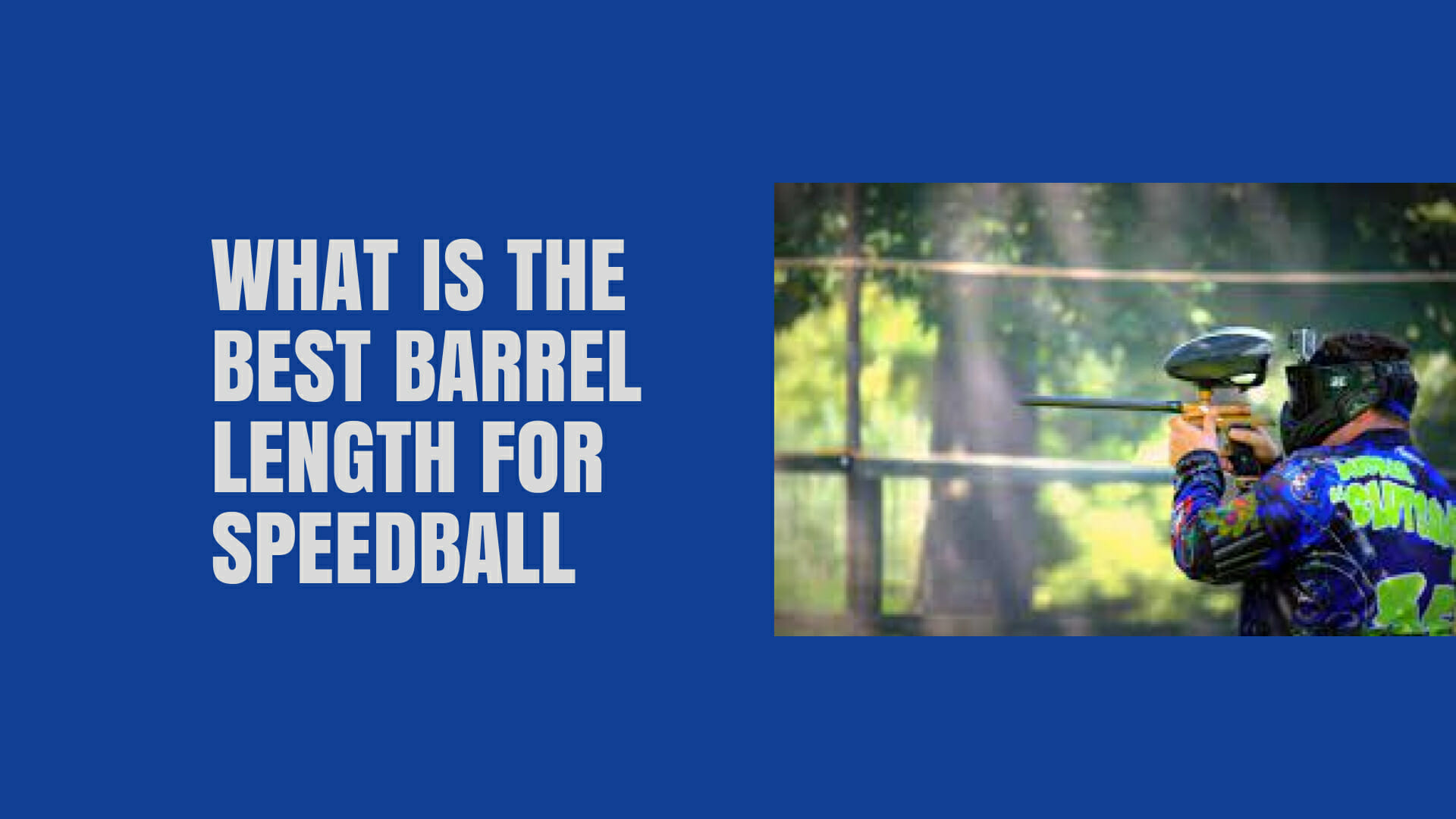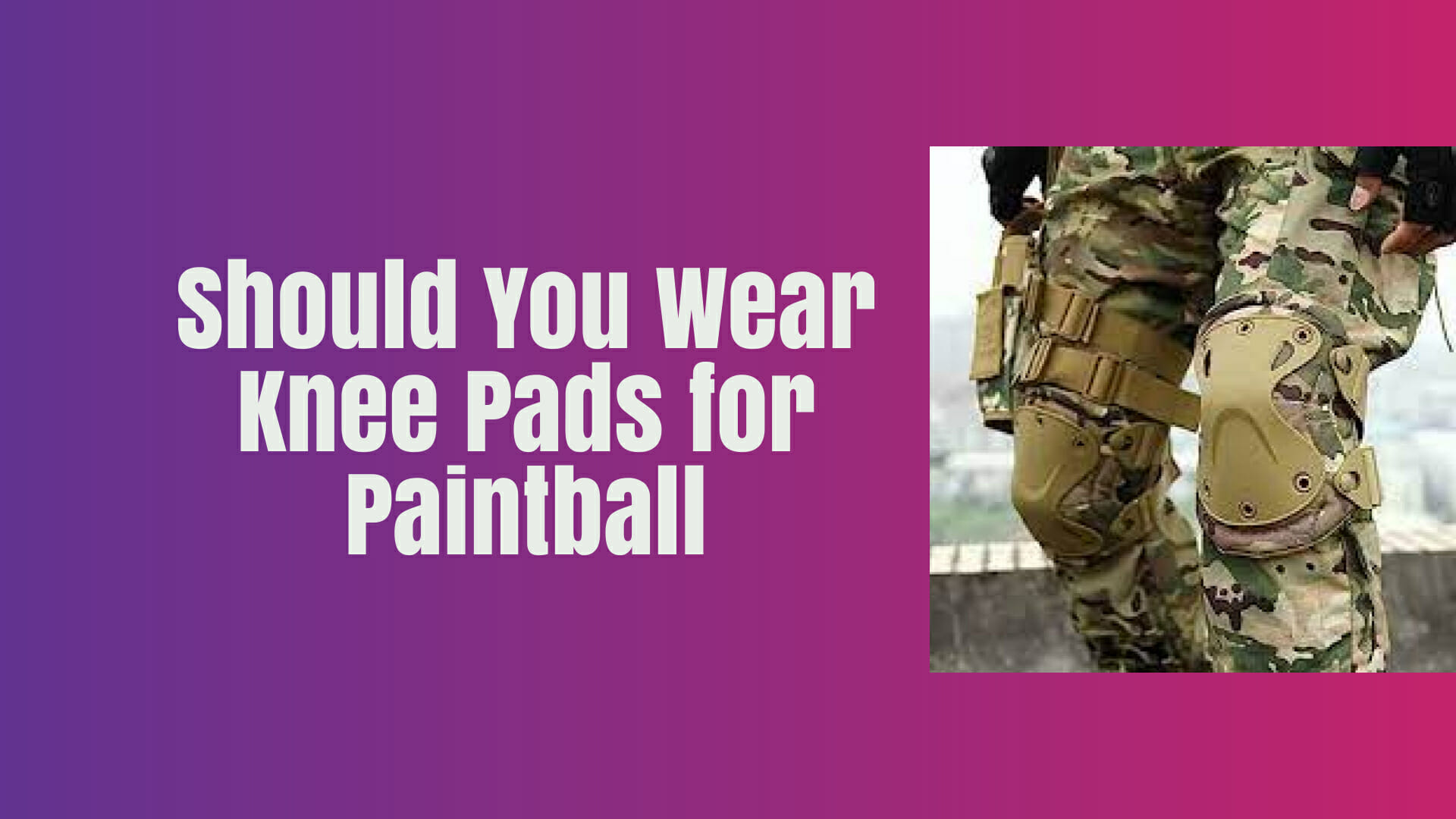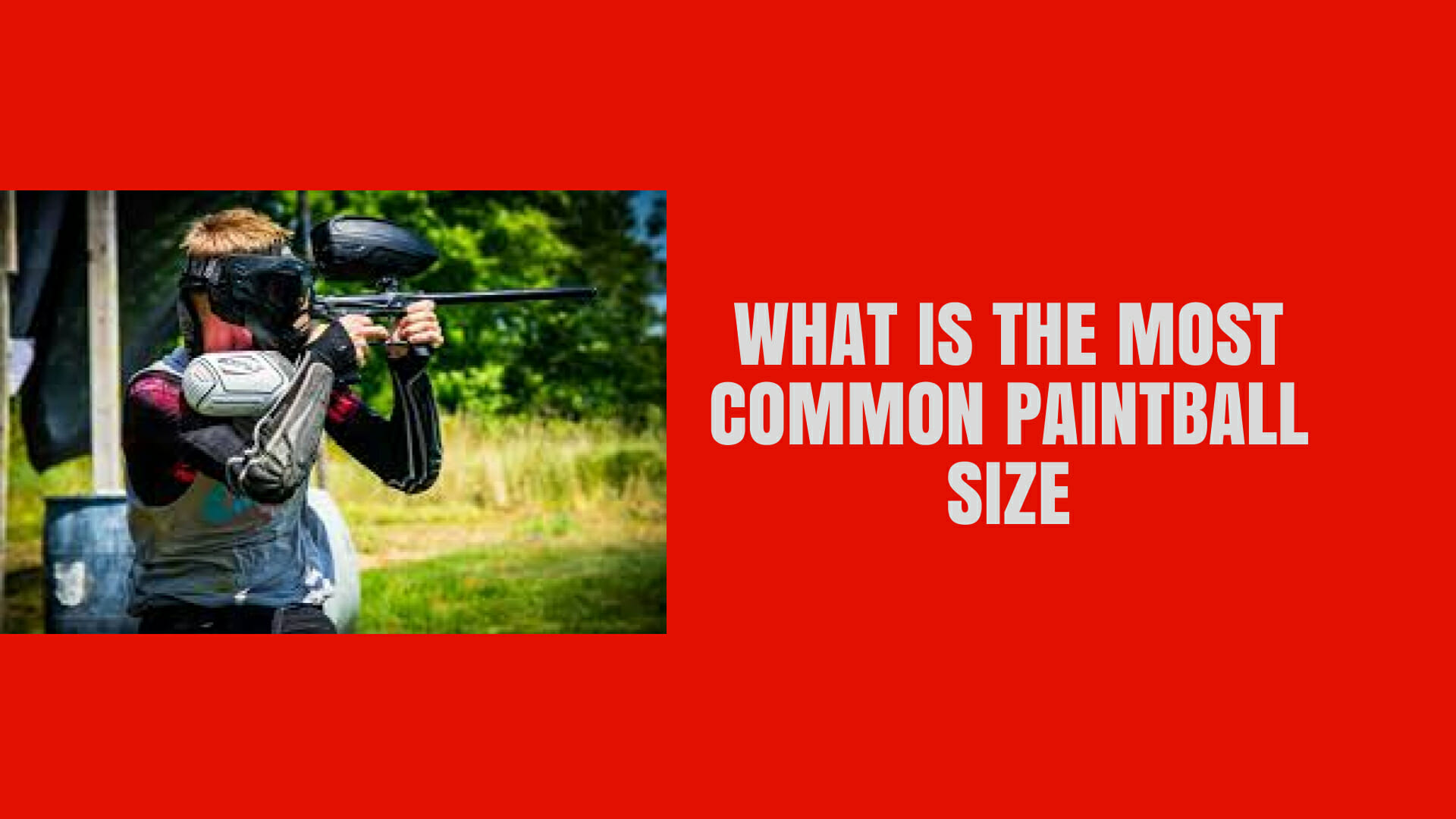A paintball gun can shoot accurately up to a maximum range of 200 feet. Paintball guns, also known as markers, are designed to shoot paintballs accurately within this range distance.
Factors Affecting The Accuracy Of Paintball Guns
When it comes to paintball, accuracy is key. Whether you’re participating in a friendly game with your friends or competing in a professional tournament, having a paintball gun that shoots accurately can greatly enhance your performance. However, there are several factors that can affect the accuracy of paintball guns. Let’s explore some of these factors:
Barrel Length and Bore Size
The length and bore size of the barrel play a significant role in determining the accuracy of a paintball gun. A longer barrel provides more control over the trajectory of the paintball, resulting in improved accuracy. Conversely, a shorter barrel may sacrifice some accuracy but offers better maneuverability. In addition to barrel length, the bore size also affects accuracy. A smaller bore size provides a tighter fit between the paintball and the barrel, reducing air leakage and improving accuracy.
Paintball Quality and Size
The quality and size of the paintballs used can greatly impact the accuracy of the shots. Using high-quality paintballs that are round and consistent in size will result in more accurate shots. On the other hand, low-quality or misshapen paintballs can deviate from their intended path, leading to less accuracy. It is essential to choose paintballs that are specifically designed for the type of paintball gun you are using.
Air Pressure and Velocity
The air pressure and velocity at which the paintball gun shoots can significantly affect its accuracy. If the air pressure is too low, the paintball may not have enough force to travel long distances accurately. Conversely, if the air pressure is too high, the paintball may become unstable and veer off course. Finding the right balance and adjusting the velocity according to the desired shooting distance and the type of paintball being used is crucial for achieving optimal accuracy.
Shooting Angle and Distance
The shooting angle and distance also play a vital role in the accuracy of paintball guns. When shooting at an upward or downward angle, the paintball’s trajectory and accuracy can be affected. Additionally, the shooting distance will determine the amount of drop the paintball experiences during its flight. Understanding the shooting angle and distance allows players to make necessary adjustments and ensure accurate shots.
In conclusion, several factors contribute to the accuracy of paintball guns. The barrel length and bore size, paintball quality and size, air pressure and velocity, as well as shooting angle and distance, all play crucial roles in determining how accurately a paintball gun can shoot. Considering and optimizing these factors will help paintball enthusiasts achieve better accuracy in their shots, ultimately enhancing their overall gameplay experience.
Range of Paintball Guns
When it comes to paintball, understanding the range of your gun is crucial for tactical advantage and accuracy. Knowing how far a paintball gun can shoot accurately will determine your approach and strategy on the field. In this guide, we’ll dive into the range of paintball guns, exploring the maximum effective range, average shooting distance, long-range capability, and the factors that can limit the range of your shots.
Maximum Effective Range
The maximum effective range of a paintball gun refers to the distance at which it can consistently hit a target with reasonable accuracy. It is important to note that the maximum effective range varies depending on the type of paintball gun, barrel length, paintball quality, and other factors.
Average Shooting Distance
The average shooting distance of a paintball gun ranges between 50 to 100 feet. Within this range, paintballs fired from a well-maintained gun can maintain good accuracy and velocity. It’s worth mentioning that some players may achieve longer shooting distances with proper adjustments and modifications to their equipment.
Long-range Capability
While paintball guns are not typically designed for long-range shots like sniper rifles, certain markers and setups can achieve extended shooting distances. With specialized barrels, high-pressure air systems, and precise tuning, some players have reported shooting up to 200 feet accurately. However, it’s important to note that such long-range shots require skill, experience, and customization beyond the typical capabilities of paintball guns.
Factors Limiting Range
The range of a paintball gun can be limited by several factors, such as:
- Paintball Quality: Low-quality paintballs may break or veer off course more easily, reducing effective range.
- Barrel Length: Longer barrels generally provide better accuracy and range, but excessively long barrels can restrict maneuverability on the field.
- Projectile Velocity: Most paintball fields have a velocity limit, and exceeding it can decrease accuracy, increase dispersion, and even cause injuries.
- Wind: Strong winds can significantly affect the trajectory and distance of paintballs, making long-range shots more challenging.
- Terrain: The terrain on the field, including trees, brush, and other obstacles, can obstruct shots and reduce effective range.
Understanding the maximum effective range, average shooting distance, long-range capability, and the factors that limit range will help you make informed decisions and improve your performance on the paintball field. Keep in mind that practice, experience, and proper equipment maintenance play crucial roles in maximizing your shooting distance while maintaining accuracy. Now that you have a better understanding of the range of paintball guns, it’s time to gear up and embrace the challenge of the game!
Types Of Paintball Guns
When it comes to paintball, understanding the different types of paintball guns is essential. The type of paintball gun you use can greatly affect the accuracy and distance at which your shots will hit their targets. Let’s take a closer look at the main types of paintball guns available in the market:
Pump Action Guns
Pump action guns, also known as pump markers, are the simplest and most basic type of paintball guns. These guns require manual operation, where the player needs to pump the gun to load each shot. While pump action guns may not have the same rapid fire capability as other types, they do offer excellent accuracy and control. These guns are often preferred by more experienced players looking for precision shots.
Mechanical Guns
Mechanical guns, also known as semi-automatic guns, are the most commonly used type of paintball guns. These guns use gas or compressed air to propel paintballs and can shoot in a semi-automatic manner, providing a continuous and faster rate of fire. However, the accuracy of mechanical guns may vary depending on factors such as the quality of the gun and the paintballs used.
Electronic Guns
Electronic guns, also called electro-pneumatic guns or “e-guns,” are the most advanced type of paintball guns. These guns feature electronic triggers that allow for rapid and consistent firing. Electronic guns often have various firing modes, including fully automatic, burst, and ramping, giving players a higher rate of fire. The precision and accuracy of electronic guns are generally superior due to advanced firing mechanisms and adjustable settings.
Mag-fed Guns
Mag-fed guns, short for magazine-fed guns, are a more recent development in the world of paintball. These guns use detachable magazines to hold paintballs, similar to real firearms. Mag-fed guns offer a more realistic and immersive experience for players. The accuracy of mag-fed guns can vary depending on the specific model and its design features.
In conclusion, the type of paintball gun you choose will have a significant impact on how far and accurately you can shoot. Pump action guns are known for their precision, while mechanical guns offer a balance between accuracy and rate of fire. Electronic guns provide the highest level of accuracy and shooting consistency, while mag-fed guns can provide a more realistic playing experience. Consider your playing style and preferences when selecting the right paintball gun for you.
Paintball Sniper Rifles: Long-Range Options
When it comes to paintball, accuracy and range are crucial for a successful sniper. That’s where paintball sniper rifles, specifically designed for long-range shots, come into play. If you’re looking to take your paintball game to the next level and dominate the field from a distance, consider investing in a paintball sniper rifle. In this article, we’ll explore some of the key elements that make these rifles ideal for long-range shots.
Custom Sniper Builds
One of the major factors that contribute to the long-range capabilities of paintball sniper rifles is the custom build. Unlike standard markers, sniper rifles are often modified to enhance accuracy and shooting distance. These custom builds may involve adjustments to the trigger system, improved air efficiency, and optimized barrel length.
Upgraded Barrel and Air System
The barrel of a paintball sniper rifle plays a vital role in achieving accuracy and long-range shots. Sniper rifles often feature an upgraded barrel that is longer and provides improved stability to the paintball as it exits the marker. This allows for more controlled and precise shots, even at extended distances.
In addition to a specialized barrel, paintball snipers use an upgraded air system. The air system of a sniper rifle provides consistent and regulated airflow, ensuring that each shot is delivered with optimal power and velocity. This combination of an upgraded barrel and air system maximizes the sniper rifle’s performance for long-range shots.
MOA Accuracy
When it comes to long-range accuracy, paintball sniper rifles aim for MOA (minutes of angle) precision. MOA is a measure of angular accuracy, often expressed in inches at specific distances. A good paintball sniper rifle should offer MOA accuracy, ensuring that your shots hit the target with remarkable consistency, even from a distance.
Effective Range Comparisons
So, how far can a paintball sniper rifle shoot accurately? The effective range of a sniper rifle can vary depending on various factors, including the specific rifle build, paintball quality, and environmental conditions. However, on average, a well-built paintball sniper rifle can accurately hit targets at distances ranging from 100 to 150 feet.
It’s important to note that while a sniper rifle can shoot accurately at these distances, the chances of the paintball breaking upon impact decrease as the distance increases. Therefore, it’s crucial to take into account the effective range and adjust your strategy accordingly for maximum effectiveness.
To summarize, paintball sniper rifles offer long-range options for players looking to dominate the field from a distance. Custom builds, upgraded barrel and air systems, MOA accuracy, and effective range comparisons all contribute to the sniper rifle’s capabilities. Investing in a paintball sniper rifle will allow you to hit targets accurately and exert control over the field like a true sniper.
Precision Shooting Techniques
When it comes to precision shooting with a paintball gun, mastering the right techniques is crucial. From your stance and body positioning to your aiming and firing technique, every aspect plays a role in how accurately you can shoot. In this section, we will explore the key techniques that can help you improve your precision shooting with a paintball gun.
Stance and Body Positioning
Having the right stance and body positioning is essential for maintaining stability and accuracy while shooting a paintball gun. Here are some key points to keep in mind:
- Stand with your feet shoulder-width apart for a stable base.
- Keep your body slightly forward, leaning into the shot.
- Maintain a relaxed posture to minimize tension and promote fluid movement.
Aiming and Sight Alignment
Aiming your paintball gun accurately requires proper alignment of your sights with your target. Follow these tips for better aiming:
- Focus your eyes on the target and bring your gun up to your line of sight.
- Align the front and rear sights of your paintball gun properly.
- Keep a steady gaze on your target while adjusting your aim.
Trigger Control and Firing Technique
Proper trigger control and firing technique can greatly impact the accuracy of your shots. Consider the following:
- Maintain a consistent grip on the paintball gun, ensuring your finger is properly positioned on the trigger.
- Squeeze the trigger smoothly and evenly, avoiding jerky motions that can affect your aim.
- Practice follow-through by keeping your sights aligned with the target even after firing the shot.
By mastering these precision shooting techniques – Stance and Body Positioning, Aiming and Sight Alignment, and Trigger Control and Firing Technique – you can significantly improve the accuracy of your paintball gun shots. Remember to practice regularly and focus on refining these skills to become a more precise shooter on the paintball field.
Improving Accuracy With Upgrades And Modifications
When it comes to achieving maximum accuracy with a paintball gun, there are a few upgrades and modifications that can significantly enhance its performance. By investing in these upgrades, paintball enthusiasts can take their game to the next level. Let’s take a closer look at some of the most effective upgrades and modifications that can help improve accuracy.
Barrel Upgrades
A barrel upgrade is one of the most common modifications that paintball players make to improve accuracy. Upgrading the barrel can enhance shot consistency, reduce air turbulence, and increase overall range. A longer barrel can provide better control and stability, while a well-designed bore can ensure a more consistent shot trajectory. It’s important to choose a barrel upgrade that is compatible with your marker and suits your playing style.
Hopper Upgrades
The hopper, also known as the loader, plays a crucial role in ensuring accurate shots. An upgraded hopper can significantly reduce ball breakage and feed issues, improving overall accuracy. Look for a hopper that offers a consistent and reliable feed rate, as well as anti-jamming features. Additionally, a low-profile hopper design can maximize your line of sight, allowing for better target acquisition.
Air System Upgrades
The air system of a paintball gun is another area where upgrades can greatly impact accuracy. Upgrading to a high-quality and consistent air system, such as a compressed air tank or a regulated CO2 system, can result in more precise shots. A reliable air system ensures that each shot is propelled with consistent force, minimizing velocity fluctuations, and improving accuracy. Regular maintenance and proper tuning of the air system are also essential for optimal performance.
Paintball Selection and Quality
Choosing the right paintballs is crucial for achieving accuracy. High-quality paintballs with a consistent size and shape are less likely to veer off course and can improve accuracy. It’s important to consider the weather conditions and playing environment when selecting paintballs, as different types of paintballs perform differently in various situations. Additionally, ensuring that the paintballs are properly stored and not damaged can help maintain their integrity and accuracy.
By investing in these upgrades and modifications, paintball players can significantly improve the accuracy of their shots on the field. Remember to choose upgrades that are compatible with your paintball gun and consider your individual playing style. With the right combination of barrel, hopper, air system upgrades, and high-quality paintballs, your accuracy on the paintball field can reach new heights.
Adjusting Air Pressure And Velocity For Accuracy
Chronographing and Safe Shooting Velocity
Before discussing the optimal velocity for accuracy, it’s important to understand the process of chronographing and setting a safe shooting velocity for your paintball gun. Chronographing is the method used to measure the speed at which paintballs are shot from the gun. This measurement is typically expressed in feet per second (FPS). It is crucial to ensure that the shooting velocity falls within safe limits to prevent the risk of injury during gameplay. Shooting paintballs at excessively high velocities can cause serious harm to players.
Finding the Optimal Velocity for Accuracy
Once you have set a safe shooting velocity for your paintball gun, the next step is to find the optimal velocity for accuracy. The optimal velocity refers to the speed at which paintballs are fired to achieve the highest level of accuracy over longer distances. It is worth noting that different paintball guns may have different ideal velocities, so experimentation and adjustments are necessary to find the sweet spot.
Adjusting Air Pressure
One way to fine-tune the velocity of your paintball gun is by adjusting the air pressure. Air pressure directly affects the speed at which paintballs travel through the barrel. Increasing the air pressure will generally result in higher velocities while decreasing the air pressure will lead to lower velocities. It’s important to strike a balance and find the right air pressure level that allows for optimal accuracy without sacrificing too much speed.
When adjusting the air pressure, it’s crucial to refer to the manufacturer’s guidelines and recommendations for your specific paintball gun model. Each gun may have its own unique requirements to achieve the best accuracy. Be sure to follow the instructions provided to avoid damaging the gun or compromising its performance.
Ensuring Safe Shooting Velocity
Remember, safety should always be a top priority when adjusting the air pressure and velocity of your paintball gun. Keep in mind these essential points:
- Regularly chronograph your paintball gun to ensure it is shooting within safe limits.
- Always wear proper protective gear, including goggles, masks, and padding, when participating in paintball activities.
- Adhere to local regulations and guidelines regarding paintball gun velocity and safety.
- Never aim or shoot at people who are not wearing protective gear.
By carefully adjusting the air pressure and velocity of your paintball gun, while adhering to safety measures, you can enhance the accuracy of your shots and maximize your performance on the field.

Practical Range Testing And Accuracy
When it comes to paintball guns, players often wonder how far they can shoot accurately. Determining the practical range and accuracy of a paintball gun is essential for players to make informed decisions during gameplay. In this article, we will explore the different factors that can affect the accuracy of a paintball gun, as well as how to conduct range testing to measure its performance.
Testing Paintball Gun Accuracy
To understand the accuracy of a paintball gun, it is crucial to conduct proper testing. This involves measuring the gun’s performance in terms of precision and consistency. There are various methods to test paintball gun accuracy, but the most commonly used one is shooting at targets at different distances.
Measuring Accuracy at Different Distances
Measuring accuracy at different distances helps players determine the effective range of their paintball guns. During range testing, shooters typically shoot a series of shots at targets set at specific distances, such as 10 feet, 25 feet, 50 feet, and so on. By analyzing the grouping of shots on the target, players can evaluate the gun’s accuracy at various distances.
Factors Affecting Accuracy in Real-Game Situations
While range testing provides valuable insights into a paintball gun’s accuracy, it is important to note that real-game situations may present additional challenges. Several factors can affect the accuracy of a paintball gun during gameplay, including:
- Weather conditions: Wind, rain, and extreme temperatures can all impact the trajectory of paintballs, making it more challenging to hit targets accurately.
- Player movement: Both the shooter and the target are likely to be constantly moving during a paintball game. This movement introduces a dynamic element that can affect accuracy.
- Barrel quality: The quality and condition of the gun’s barrel can influence its accuracy. A well-maintained barrel with the right bore size can contribute to consistent and accurate shots.
- Paintball quality: The quality and consistency of paintballs used can also impact accuracy. Misshapen or low-quality paintballs may not fly as straight or break as easily upon impact.
Considering these factors, players must be aware that the accuracy of a paintball gun can vary in real-game situations compared to controlled range testing conditions. It is essential to adapt shooting techniques and account for these variables during gameplay.
Tips For Increasing Accuracy In Different Conditions
When it comes to paintball, accuracy can make all the difference in your gameplay. Whether you’re playing in windy conditions, low-light situations, facing moving targets, or navigating different paintball game scenarios, there are strategies you can employ to increase your accuracy. In this article, we will explore tips for increasing accuracy in various conditions and helping you become a more formidable player on the field.
Windy Conditions
Playing paintball in windy conditions can be challenging as it can significantly affect the trajectory of your paintballs. However, there are a few strategies you can implement to counteract the wind and maintain accuracy:
- Modify your shooting technique: When faced with a headwind, aim slightly higher to compensate for the drop in the paintball’s trajectory. On the other hand, when shooting against a tailwind, aim a bit lower to counteract the lift that the wind can provide.
- Use heavier paintballs: Heavier paintballs tend to resist the wind better than lighter ones. Consider using a slightly higher caliber or selecting a paintball brand that produces heavier projectiles.
- Take advantage of obstacles: Utilize natural or man-made obstacles to block the wind and create a more stable shooting position. Position yourself behind barriers or trees that can act as windbreakers and reduce the impact of wind gusts on your shots.
Low-Light Situations
When playing paintball in low-light situations, visibility is compromised, making it harder to spot and accurately hit your opponents. However, there are techniques you can employ to enhance your accuracy in such conditions:
- Use illuminated sights or optics: Equip your paintball gun with illuminated sights or optics. These accessories can provide you with better visibility in low-light situations, enabling you to accurately aim and shoot at your targets.
- Employ stealth and listen closely: In low-light situations, rely on your sense of sound and take advantage of the element of surprise. Move quietly, listen for opponent movements, and use your hearing to anticipate their location. This way, you can shoot accurately even if visibility is limited.
- Practice target acquisition: Regularly practice target acquisition in low-light conditions. By training your eyes to quickly locate and focus on targets in low-light environments, you can improve your accuracy and reaction time when it matters most.
Moving Targets
Engaging moving targets requires a different approach than shooting at stationary opponents. To increase your accuracy when facing moving targets, consider the following tips:
- Lead your shots: When shooting at a moving target, aim slightly ahead of their anticipated path. By leading your shots, you increase the chances of hitting the target as they move into the paintball’s trajectory.
- Control your movements: To aim more accurately at moving targets, keep your own movements minimal. By stabilizing your stance and reducing unnecessary body motion, you can maintain a steady aim and increase your chances of hitting your mark.
- Practice tracking: Regularly practice tracking moving targets during your training sessions. This will improve your hand-eye coordination and help you develop the skills needed to accurately hit targets on the move.
Different Paintball Game Scenarios
Paintball games often feature a variety of scenarios, each with its own unique challenges. To increase accuracy in different paintball game scenarios, consider the following tactics:
- Study the scenario and plan your shots: Before the game starts, familiarize yourself with the scenario and plan your shots accordingly. Identify strategic positions that provide good sightlines to important areas of the field, enabling you to make accurate shots.
- Communicate with your teammates: Effective communication with your teammates is essential for accuracy in team-based scenarios. Coordinate your shots, share target information, and work together to maximize your chances of hitting opponents.
- Be adaptable: Different scenarios require different strategies. Be open to adapting your shooting techniques and adjusting your aim based on the specific scenario you’re playing. Remember, flexibility and versatility can lead to increased accuracy on the field.
By implementing these tips, you can enhance your accuracy in various conditions and improve your overall performance as a paintball player. Remember, practice makes perfect, so be sure to train regularly to hone your skills and become a formidable force on the paintball field.
Frequently Asked Questions
How Far Can A Paintball Gun Shoot Accurately?
A paintball gun can shoot accurately up to a distance of about 150 to 200 feet. However, the effective range may vary depending on factors such as the quality of the gun, the paintballs used, and the type of shooting technique employed.
What Factors Affect The Range Of A Paintball Gun?
The range of a paintball gun can be affected by factors such as the velocity at which the paintballs are shot, the weight and quality of the paintballs, and external conditions like wind speed and direction. Adjusting these factors can optimize the range and accuracy of the gun.
Can A Paintball Gun Shoot Farther With Upgrades?
Yes, upgrades such as longer barrels and higher quality paintballs can enhance the range and accuracy of a paintball gun. These upgrades can increase the velocity at which the paintballs are shot and improve the aerodynamics, resulting in longer shot distances.
How Can I Increase The Accuracy Of My Paintball Shots?
To increase the accuracy of your paintball shots, ensure that your gun is properly maintained and clean. Use high-quality paintballs that are round and not dimpled, as dimples can affect the trajectory. Additionally, practice proper shooting techniques like using a stable stance and focusing on your target.
Conclusion
To determine how far a paintball gun can accurately shoot, various factors come into play. The type of gun, its velocity, and the quality of the paintballs all contribute to the effective range. While some guns can shoot up to 300 feet, it is important to remember that accuracy may diminish at longer distances.
To ensure optimum performance, it is recommended to chronograph the gun and use high-quality paintballs. Ultimately, understanding the capabilities of your paintball gun will enable you to make accurate shots on the field.



